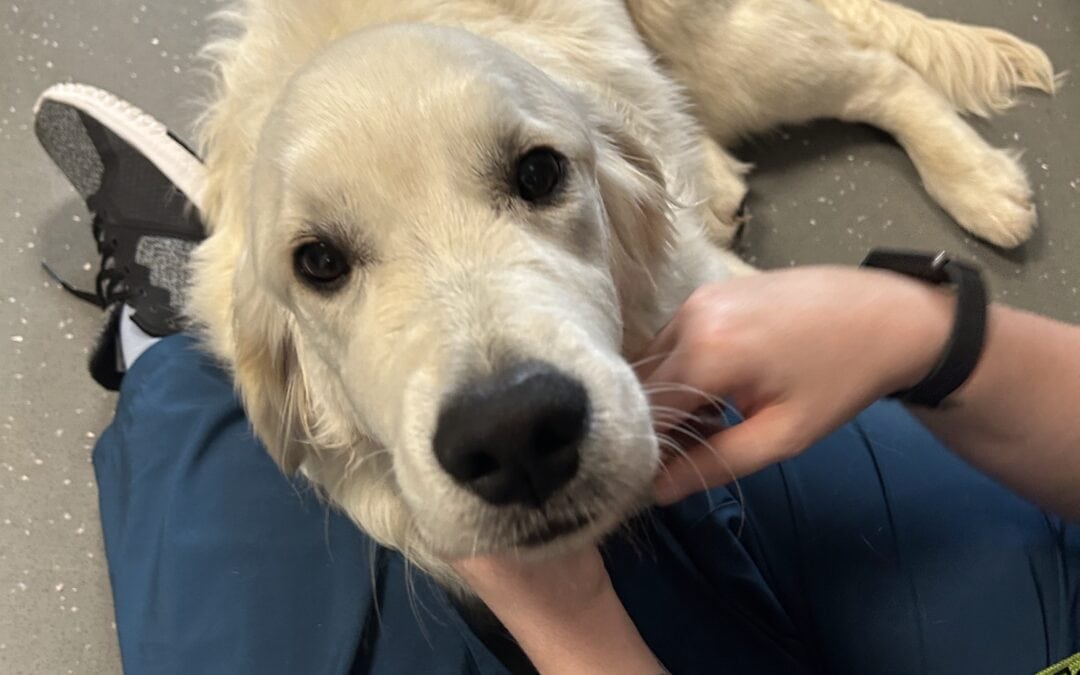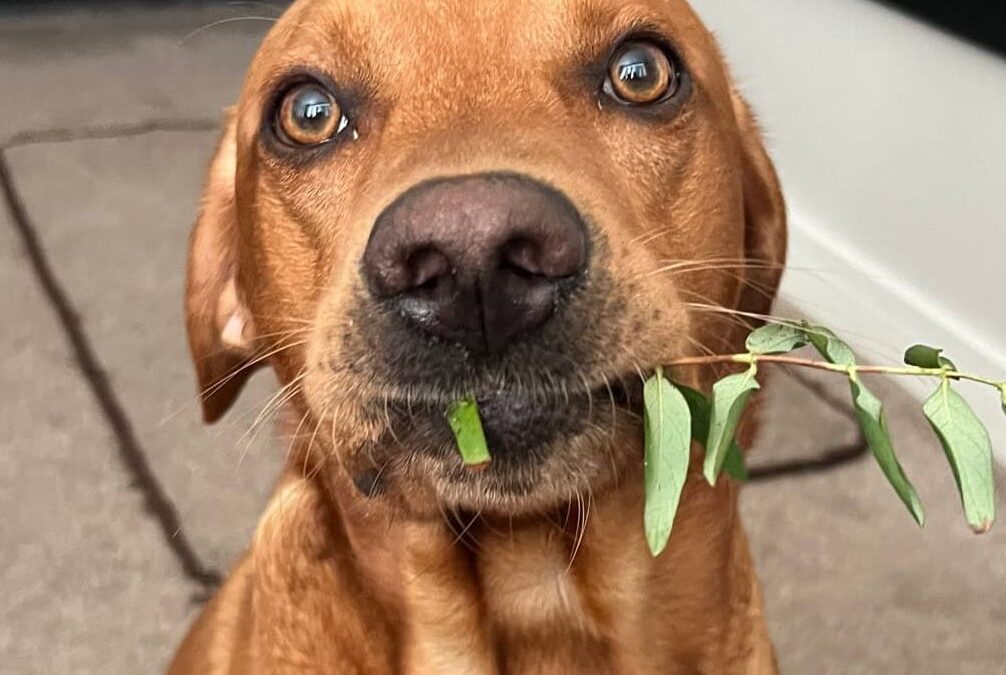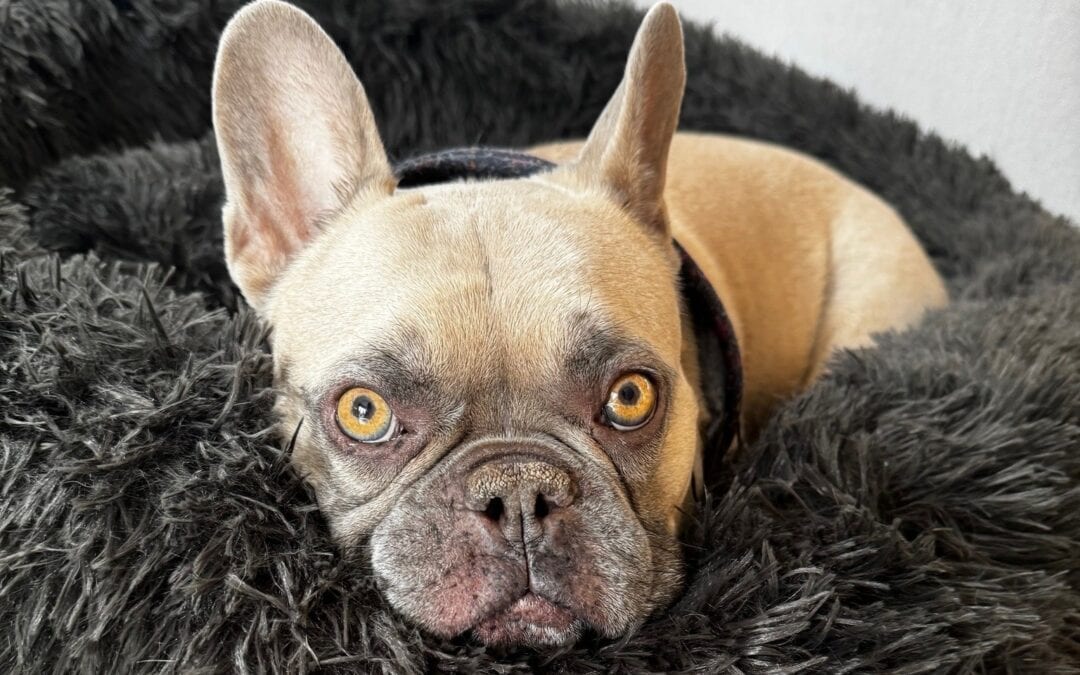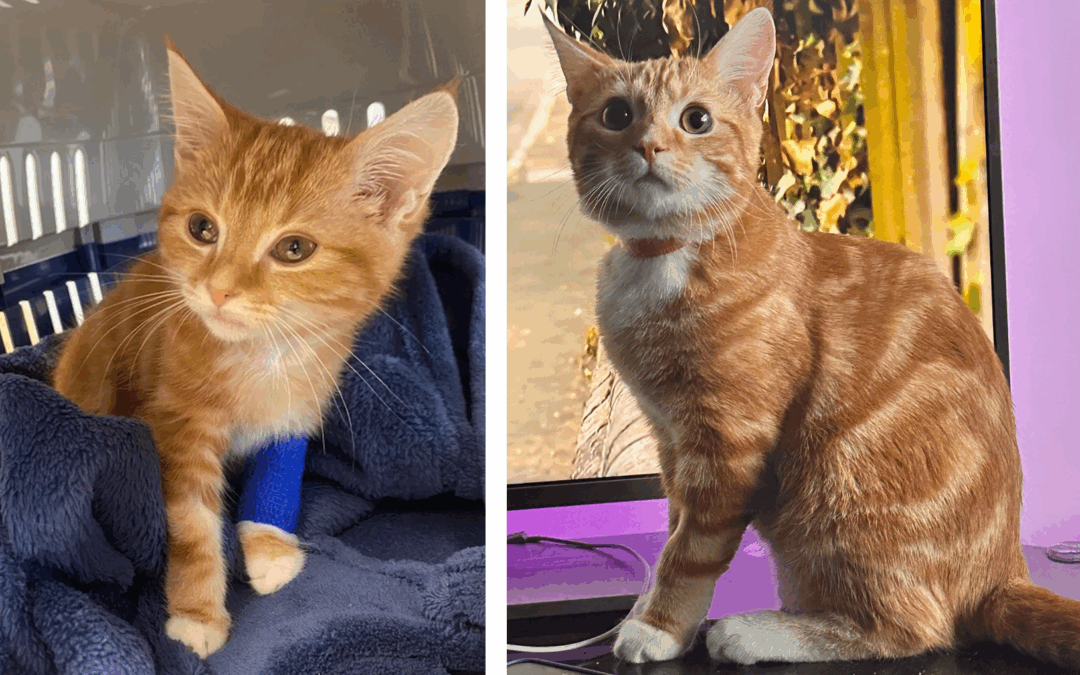A 10 year old Lakeland terrier – Dylan, was referred to us at Chestergates Veterinary Specialists after he had collapsed suddenly at home. Dylan’s local first-opinion vet had discovered that Dylan’s abdomen was full of blood (this is called a ‘haemabdomen’), and had identified a mass within his abdomen, that was considered to be the likely cause of the bleeding.
When Dylan arrived at Chestergates he was transferred immediately into our hospital under the care of Specialist soft tissue surgeon Georgia Jenkins. On careful assessment, Dylan’s heart rate was very fast and his blood pressure was low – both findings were consistent with the large amount of blood loss into his abdomen. Dylan was given oxygen via a facemask as well as special intravenous fluids called ‘colloids’ to help support his blood circulation. Dylan responded well to this initial treatment, with his heart rate and blood pressure both improving.
Georgia decided the best course of action for Dylan was to perform a CT scan to fully assess his abdomen. Following his positive response to stabilisation, Dylan was able to undergo an anaesthetic for this, which was carefully planned and monitored by our Specialist anaesthesia team as well as a team of highly experienced Registered veterinary nurses.
Dylan’s CT scan showed a large mass originating from the spleen in his abdomen. Splenic masses can be either benign or malignant (cancerous) in origin. Through assessment of the CT scan images, our imaging team was able to look for signs of cancerous spread to other organs – fortunately, there was no evidence of this, and so Dylan’s owners were happy to proceed with surgery to stop the bleeding and remove the splenic mass, along with the spleen.
Under the same anaesthetic, Dylan was transferred to our theatre suite to prepare him for surgery. Highly trained Registered veterinary nurses clipped and aseptically prepared Dylan’s abdomen, and our Specialist anaesthesia team performed a local anaesthetic block to provide excellent pain relief for Dylan during his procedure.
Georgia swiftly performed surgery to open up Dylan’s abdomen and safely remove the spleen and associated splenic mass. It was important this was done quickly, as the mass continued to bleed. This was achieved with the use of a specialised vessel sealing device, which simultaneously seals and cuts blood vessels. Dylan’s spleen and associated mass were sent off to an external laboratory for histopathology testing, where Specialist veterinary pathologists assessed the cells within the mass to determine whether or not it was cancerous.
During his surgery, it became apparent that Dylan had lost about 40% of his blood volume – this is a worryingly large amount! To treat this and support Dylan, our anaesthesia team administered a blood transfusion, once the bleeding had been completely controlled.
Dylan made a steady recovery from his surgery. He was monitored closely and his pain levels were assessed regularly to make sure he remained comfortable, and he received plenty of TLC from our lovely wards team.
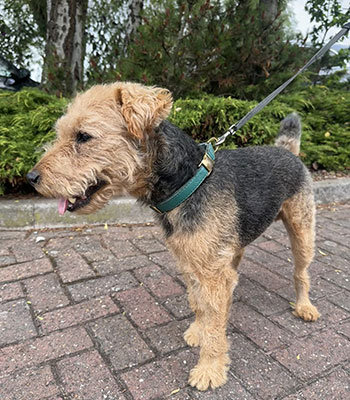
Dylan, out for a walk after recovery.
The morning after surgery, Dylan was happily wagging his tail and wanting to go for walks outside! He continued to improve and was discharged back into the care of his dedicated owners 48 hours after surgery.
Dylan was seen back at Chestergates a few weeks ago for a final wound check. Georgia was happy to hear he is doing very well at home – she also had the wonderful news to report that the mass on his spleen was benign (non-cancerous) and so no further treatment was needed!
Thank you to Dylan’s first-opinion vets for referring him to us, and for his owners for taking such brilliant care of him and allowing us to tell his story. Well done Dylan!

